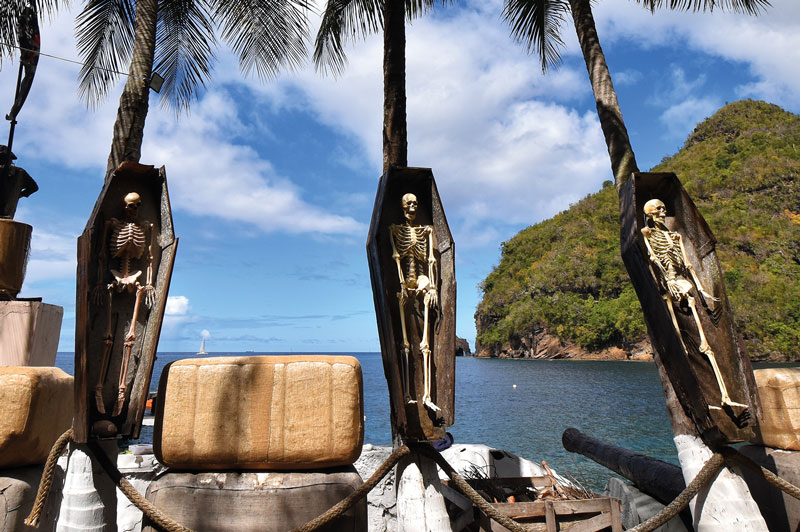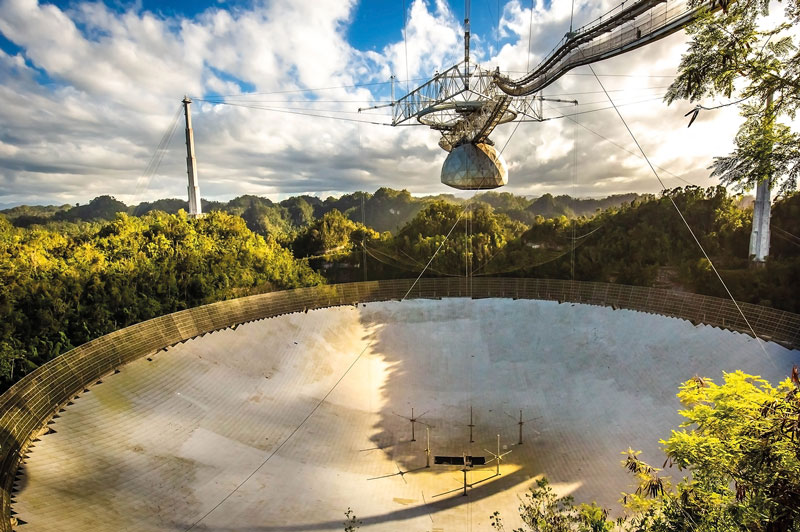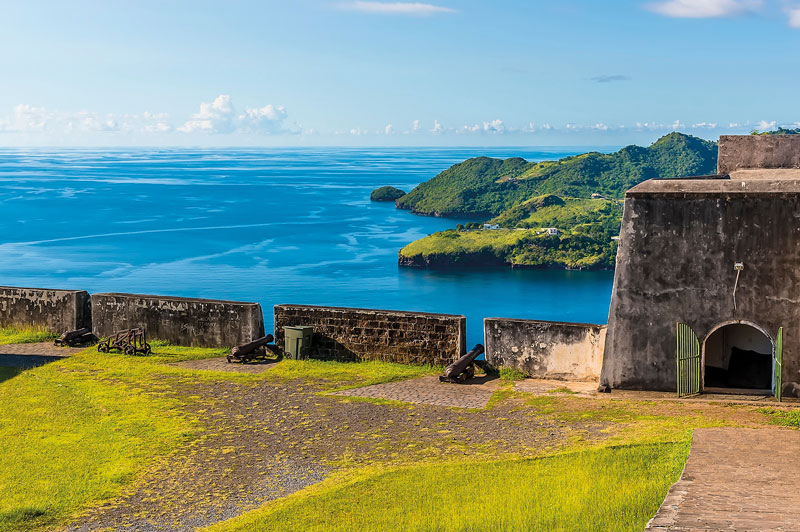
From the Dominican Republic to Puerto Rico, the Caribbean is considered an archipelago of possibility for the film industry.
Be it to revive great legends, relive important moments in history, or evoke the spirit of lost worlds, the Caribbean basin is an inexhaustible source of inspiration for the 7th Art. Action!
Arecibo, Puerto Rico: An antenna for mega productions ~

Crédit photo : Shutterstock
Contact (1997) and GoldenEye (1995) both fell in love with the same site: the Arecibo Observatory on the northern coast of Puerto Rico and its famous radio telescope. Location scouts adored the gigantesque spherical antenna—currently dismantled—which provided the perfect décor for director Martin Campbell of GoldenEye and the incredible acrobatic stunts by Pierce Brosnan as the celebrated MI6 agent, 007. Primarily used for the observation of objects in space and radio astrology, but also considered an icon of pop culture, it is not by chance that the observatory (which can also be seen in the X-Files series) was chosen as the backdrop for Contact, the acclaimed feature film by Robert Zemeckis about the search for extraterrestrial life.
Francis Ford Coppola and the Dominican Republic ~
Did you know? Francis Ford Coppola turned to the Dominican Republic for the production of some of his best films. In The Godfather Part II (1974), the story takes us to Havana, Cuba. But due to the embargo in place when the film was made (back in the early 1970’s), the location was actually Santo Domingo, in order to capture the pre-revolutionary ambiance of the largest city in the Caribbean. And it was quite believable… Already familiar with the island, Francis Ford Coppola would return several years later, this time to the resort of La Romana, in order to shoot a handful of scenes for one of the most legendary films of all time: Apocalypse Now (1979). The Dominican Republic would also serve as the décor for other films in the Hollywood pantheon, such as Sorcerer (William Friedkin, 1977) and Jurassic Park (Steven Spielberg, 1993).
Pirates of the Caribbean: Home port in Saint Vincent and the Grenadines ~

All that is left of Port Royal, at the far end of the Palisades in Kingston, Jamaica, are vestiges of a town destroyed by an earthquake in 1692. Close to three centuries later, when it was time to make Pirates of the Caribbean: The Curse of the Black Pearl (Gore Verbinski, 2003), that the film’s co-producers, Walt Disney Pictures, played tribute to this legendary refuge of pirates in the 17th century, making it a central point of intrigue for the franchise.
And yet, it was another old hangout for buccaneers where the celebrated studio built its sets: Black Point, Fort Charlotte, Wallilabou Bay on Petit Tabac: the spot in Saint Vincent and the Grenadines where the first adventures of Captain Jack Sparrow took place, marking the debut of a long series of film shoots in the region, from Dominica to Puerto Rico!
Notes from the United States Virgin Islands ~
Anecdotes from additional film shoots worth noting: In the acclaimed film inspired by French diver Jacques Mayol, Le Grand Bleu (Luc Besson, 1988), the scenes with dolphins were shot in St Croix in the US Virgin Islands. An environment that lends itself to the décor of an “El Dorado,” as it was off the coast of these islands where certain scenes at sea were shot for the film 1492: Conquest of Paradise (1992) by Ridley Scott.

